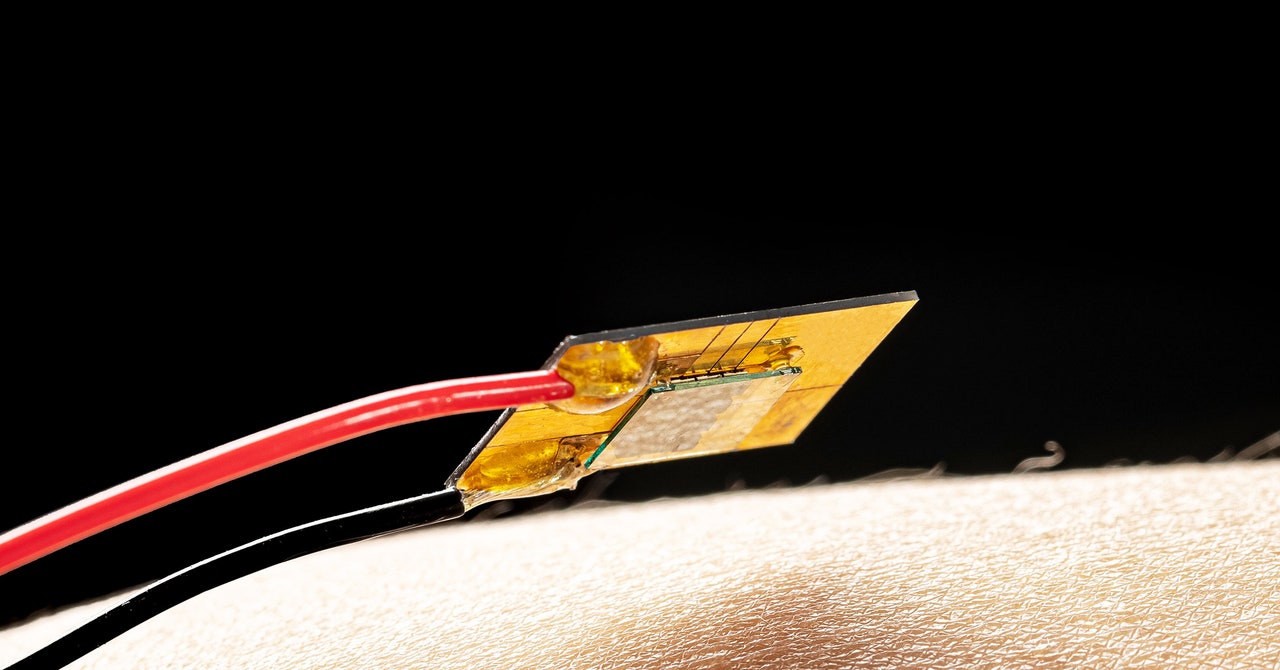
Temperature perception seems to have special meaning in our social lives, says Emily Graczyk, a biomedical engineering professor at Case Western Reserve University who was not involved in this study. In her research, Graczyk found that providing sensory feedback helps prosthesis wearers feel more confident and comfortable interacting with others and makes their artificial limbs feel more like a part of themselves. “Nothing would make your prosthesis more human than if it actually felt the warmth of someone’s grasp,” Weber adds.
In an amputation, the nerves that once relayed information between the brain and the limb are severed. But the ends of these nerves can regenerate. As they regrow, they innervate whatever tissue they can latch onto, like the skin on the residual limb. For a person with an upper limb amputation, that might be the area just above the wrist or the elbow. Zapping that skin with electricity can actually feel like a zap to the hand. This pathway, from the residual arm to the brain, serves as a “window to deliver inputs,” Weber says.
“Our traditional approach for restoring sensations for amputees is electrical activation,” stimulating a patch of skin with a small electrode, says Osborn. Nerve fibers that respond to mechanical aspects of touch, like pressure and vibration, are fat and insulated by a myelin sheath that keeps current from leaking out, making them easy to activate. But nerves that carry information related to temperature are tiny and don’t usually respond to electrical stimulation. Graczyk says that the best way to make someone feel temperature is the old-fashioned way: using a hot or cold thing to activate the full range of skin receptors.
For prosthesis wearers to feel a chill, something must transmit an ultrafast temperature signal (in under half a second) with sub-centimeter precision from the prosthesis to the skin to activate the nerves that once corresponded to the person’s fingers. Rama Venkatasubramanian, the chief technologist for thermoelectrics at the Applied Physics Lab, was up for the challenge. He has spent the past 25 years developing thermoelectric cooling devices for infrared sensors and satellites, but he was especially excited to build something that could deliver cooling sensations to people. “Nothing compares to the idea of enabling human capability,” he says.
You can buy a thermoelectric cooling device online right now, if you’d like. They’re great for preventing gamer PCs from overheating but are too hefty and too slow to mimic speedy biological processes or to wear around all day. Venkatasubramanian wanted to design something quick, noninvasive, and lightweight. So he built a tiny device out of super-thin films (about 20 to 25 microns thick, less than half the width of a human hair), which use electrons to pump heat from one layer to the next, leaving coolness behind. It’s like a tiny refrigerator with remarkable power and neuron-like speed. (Imagine a semiconductor with the heat flux levels of a rocket nozzle, while the other end is kept cool, Venkatasubramanian says.) After confirming it via many benchtop experiments, he says, “this is the world’s fastest, most efficient and intense refrigeration near room temperature.”

